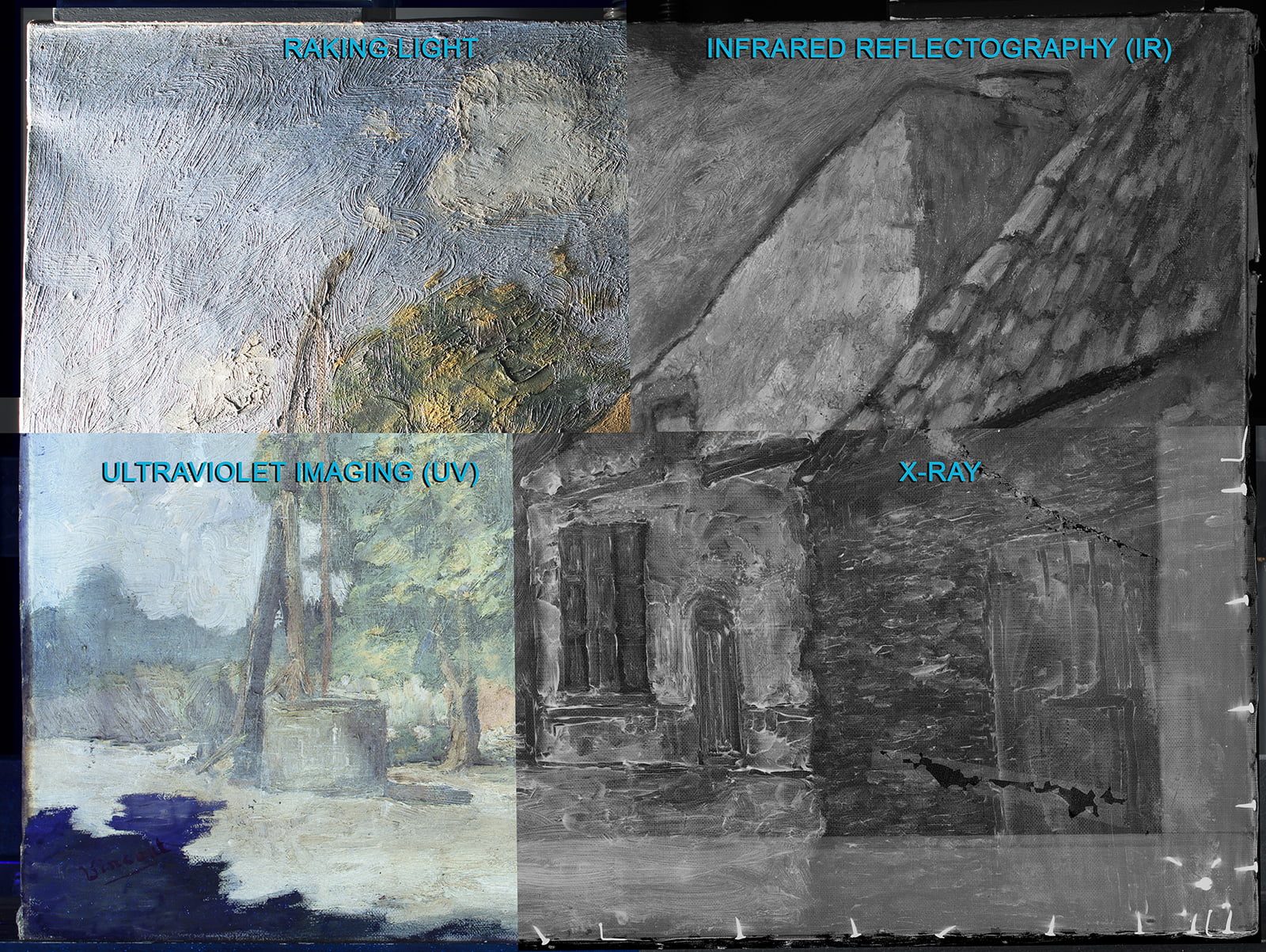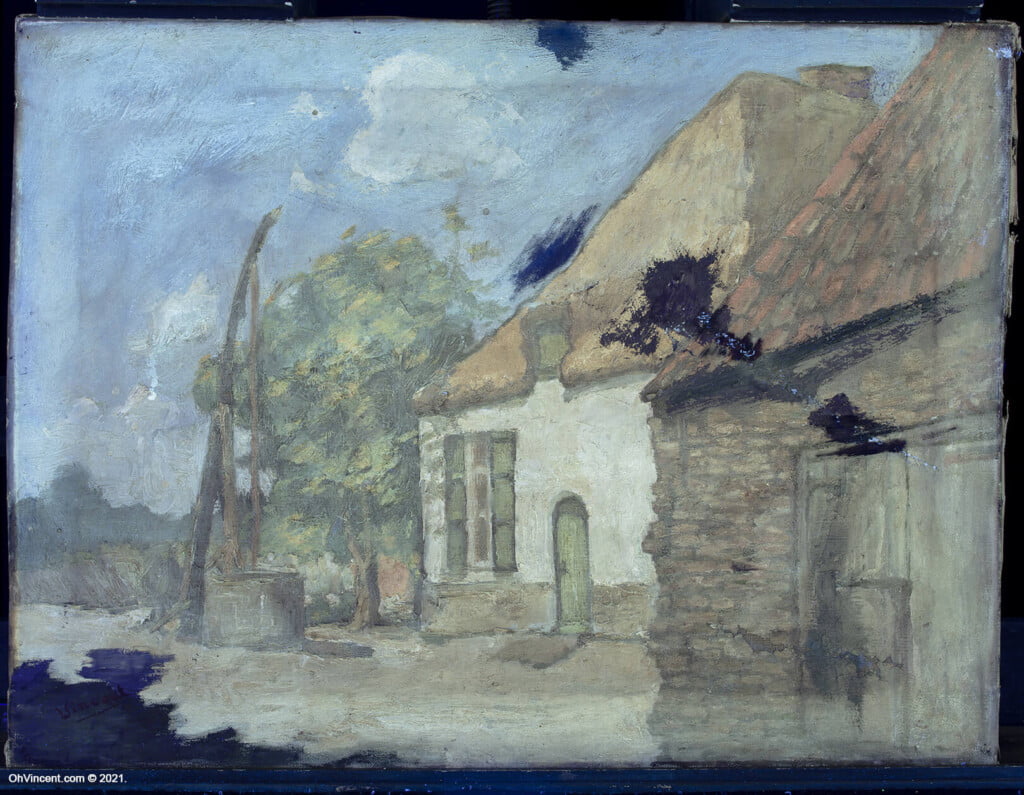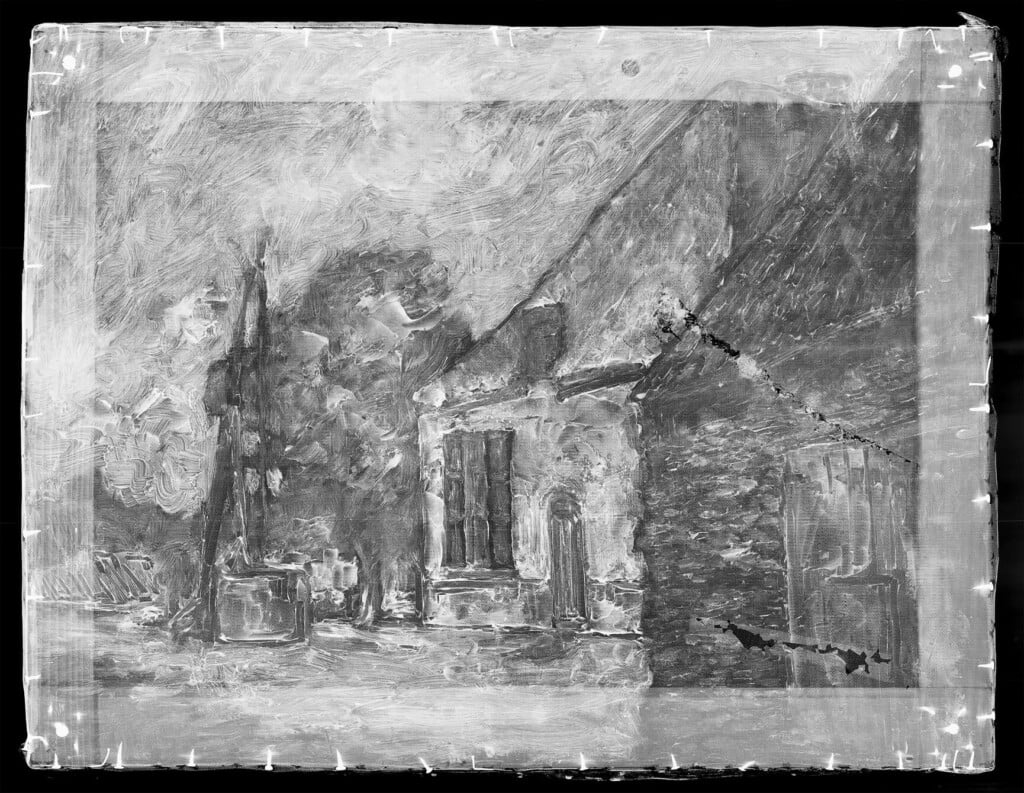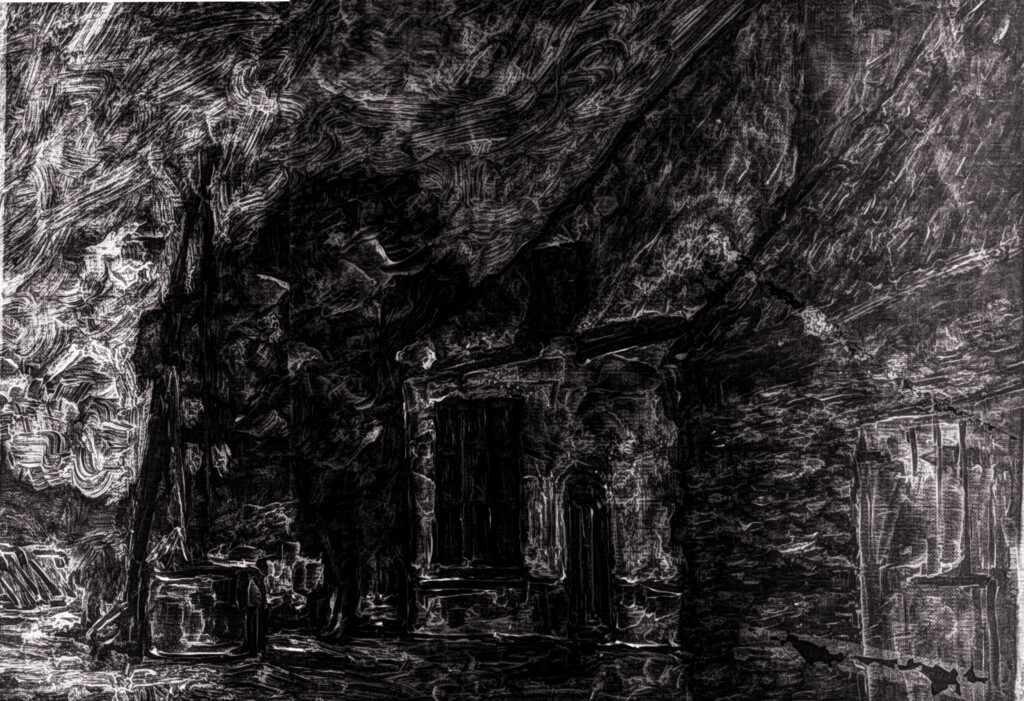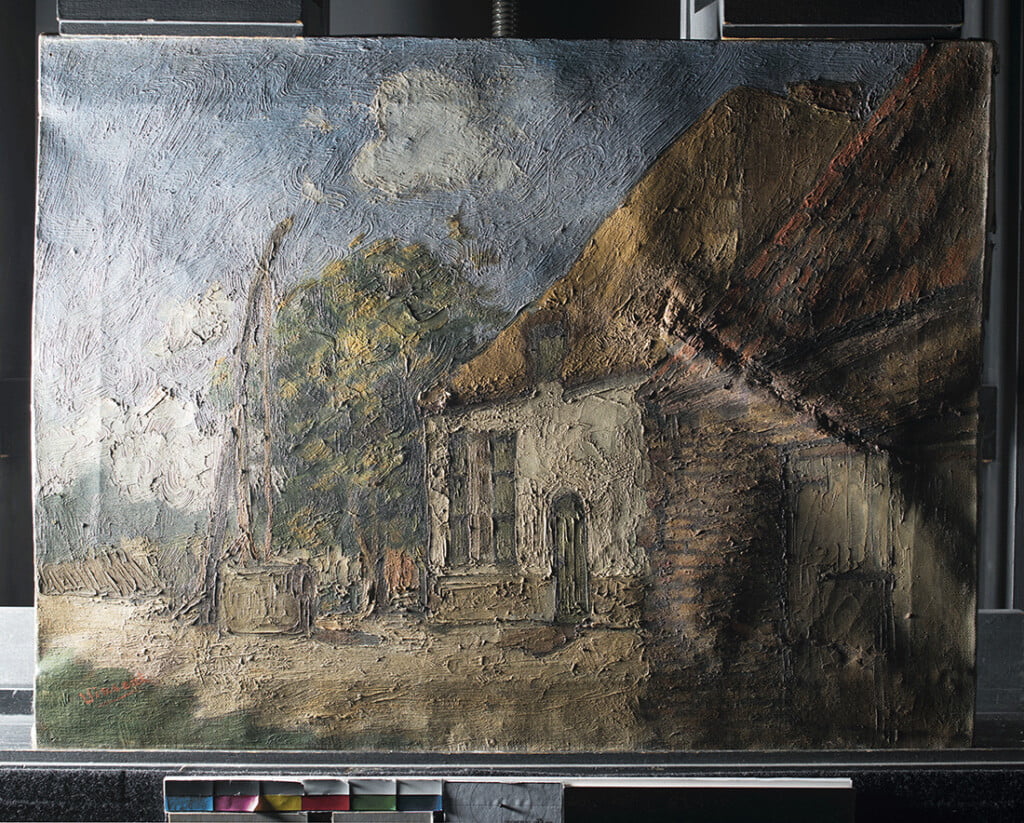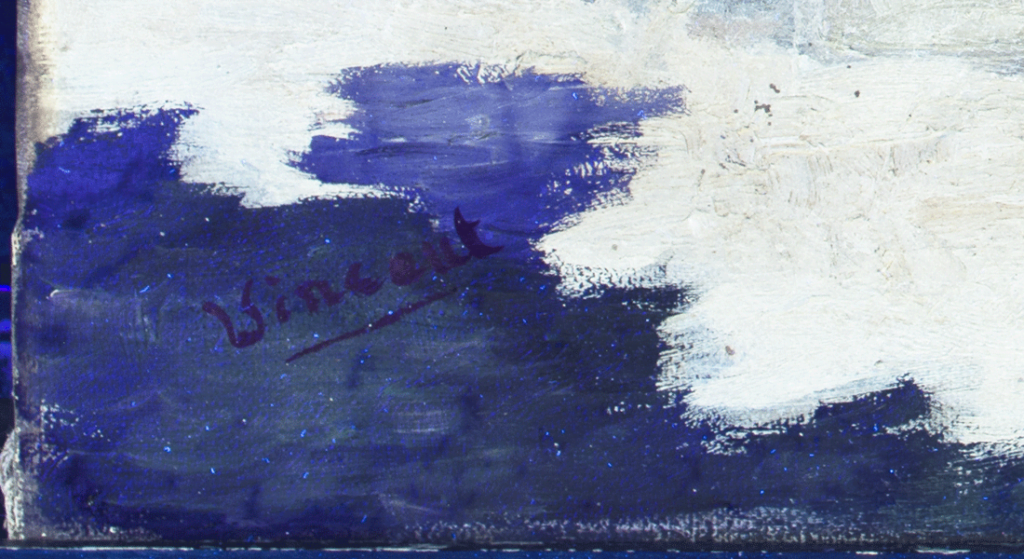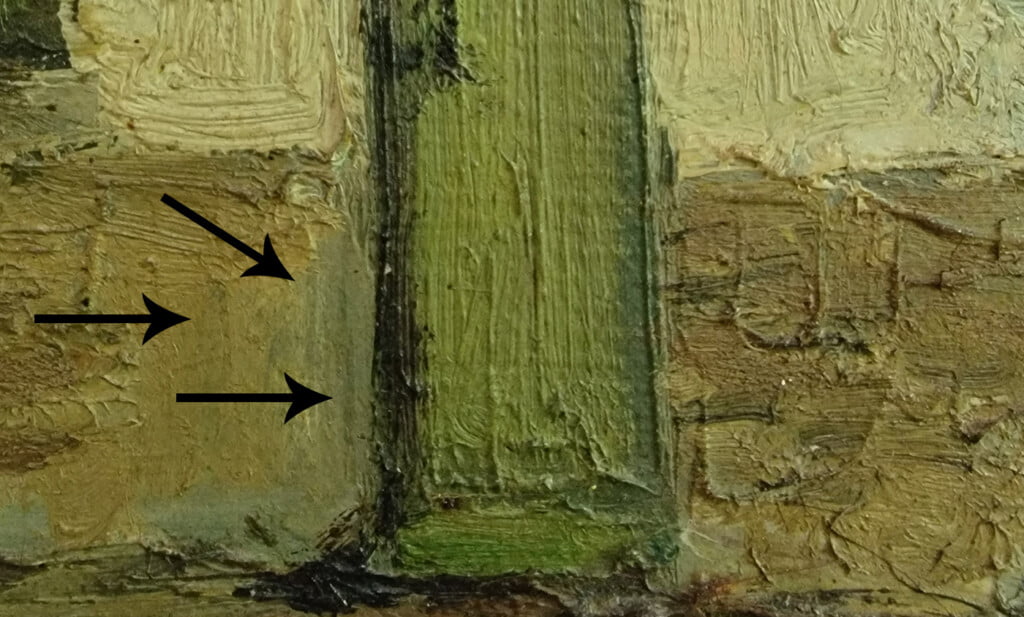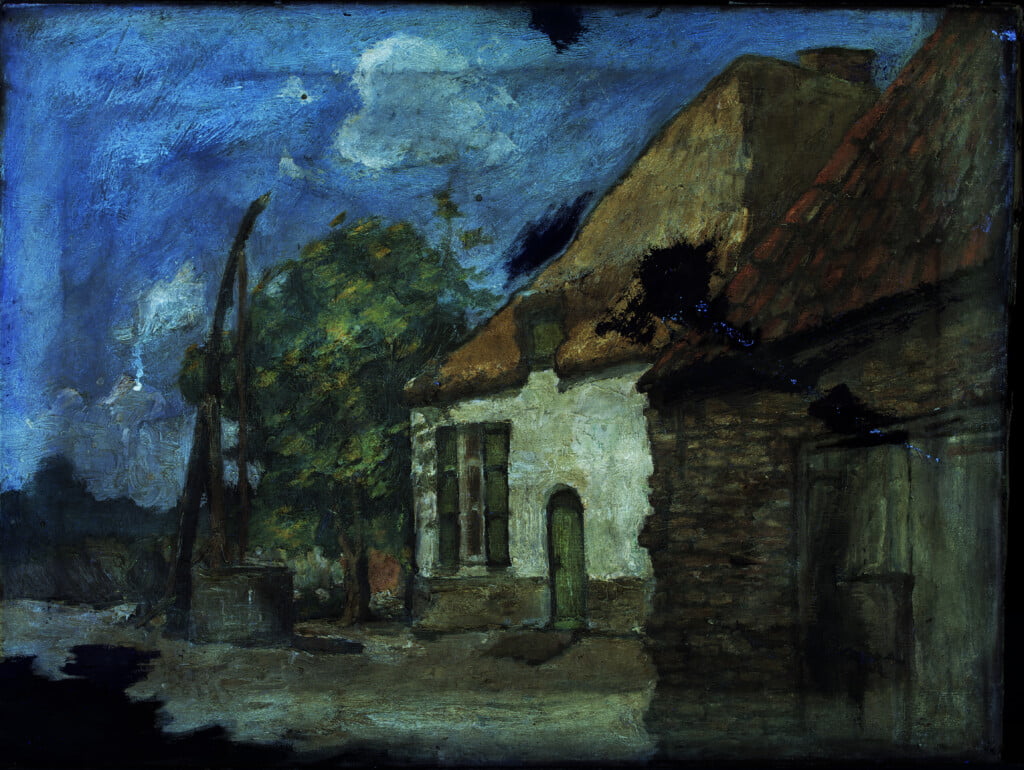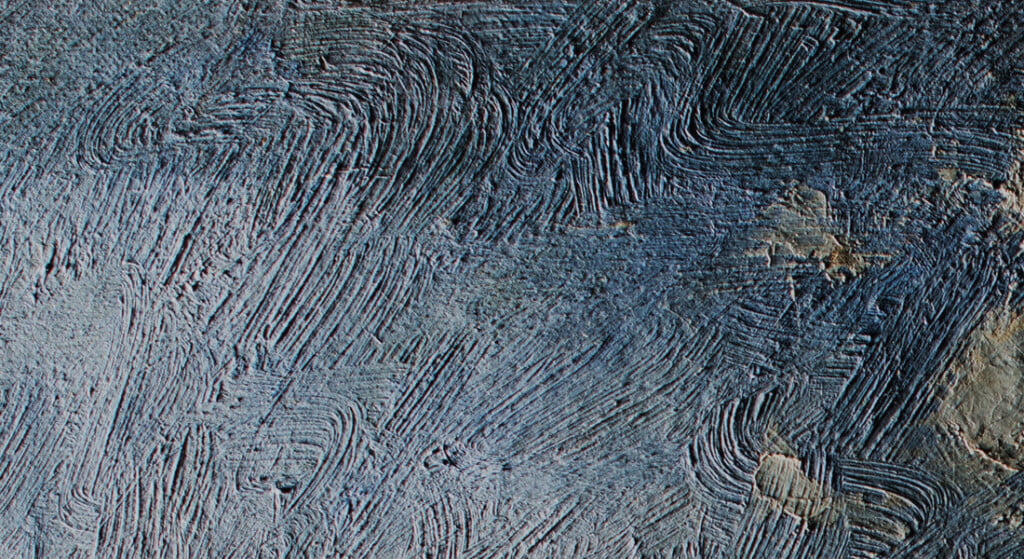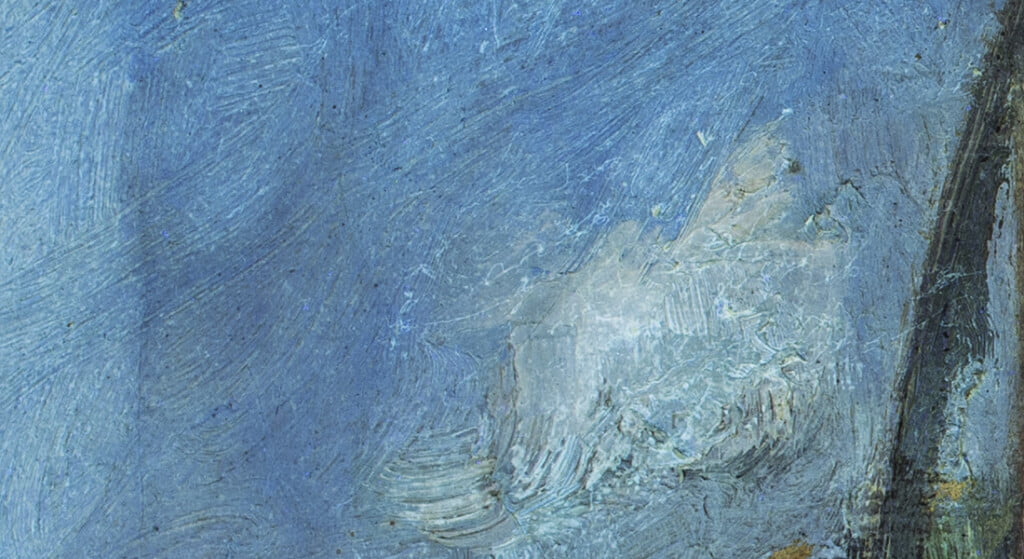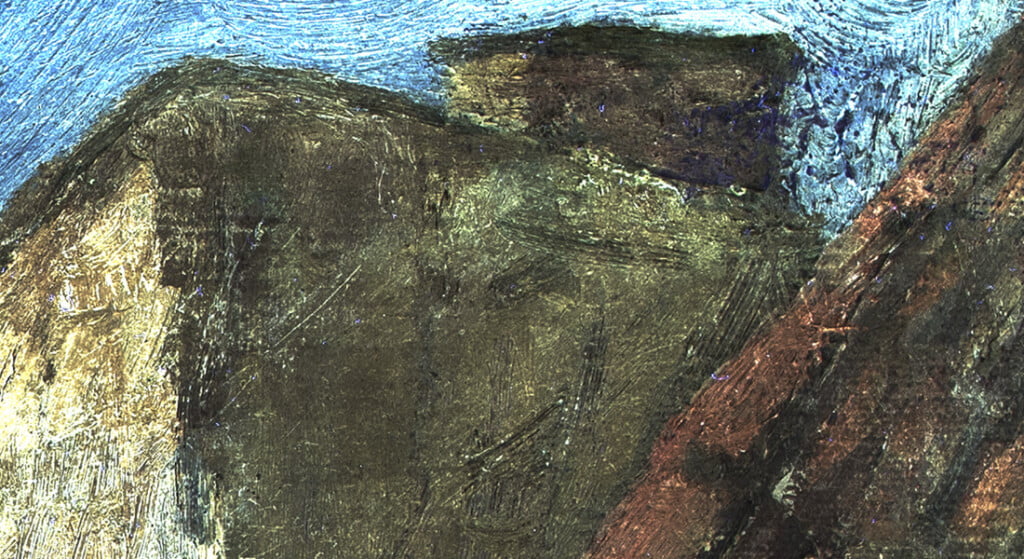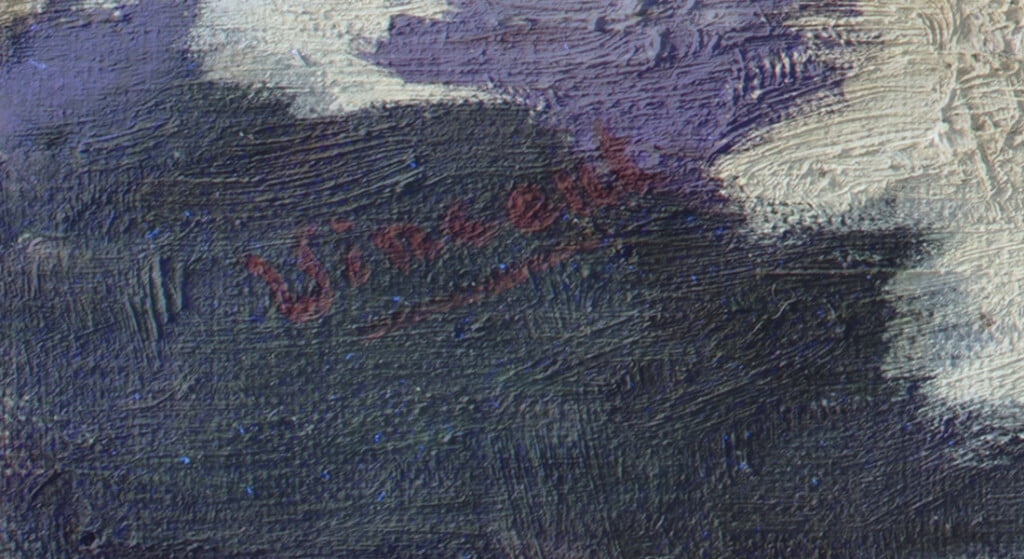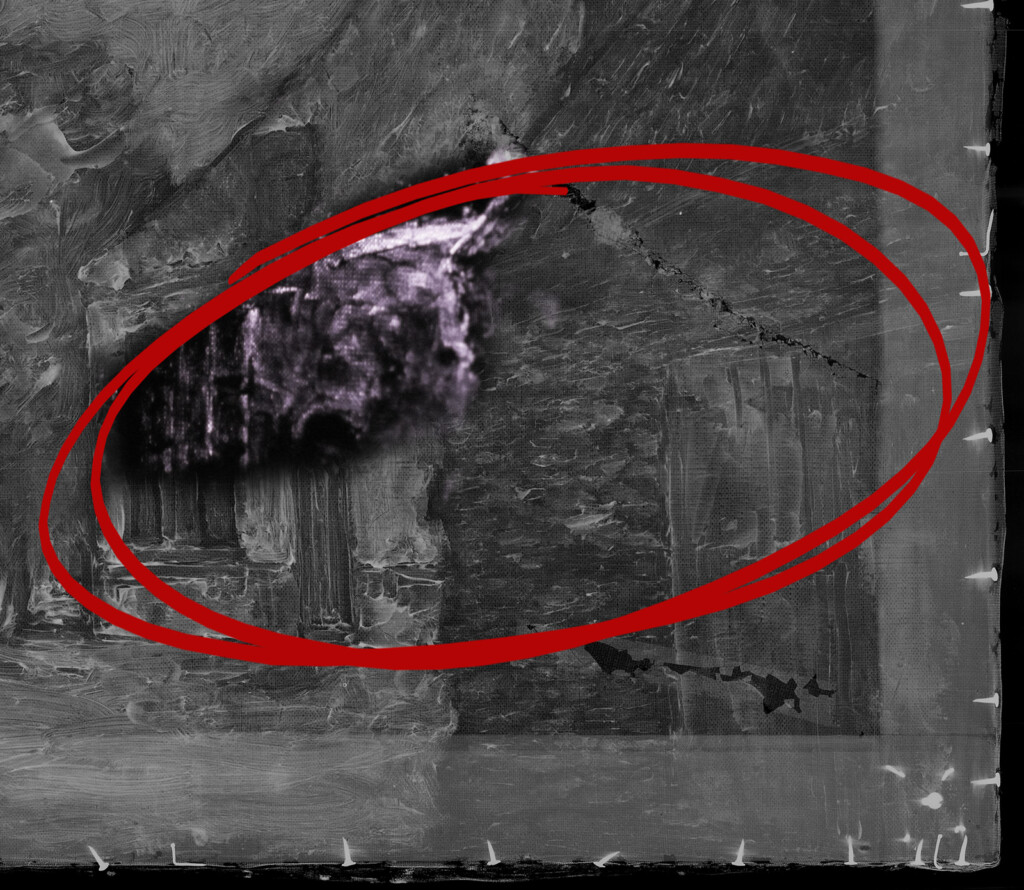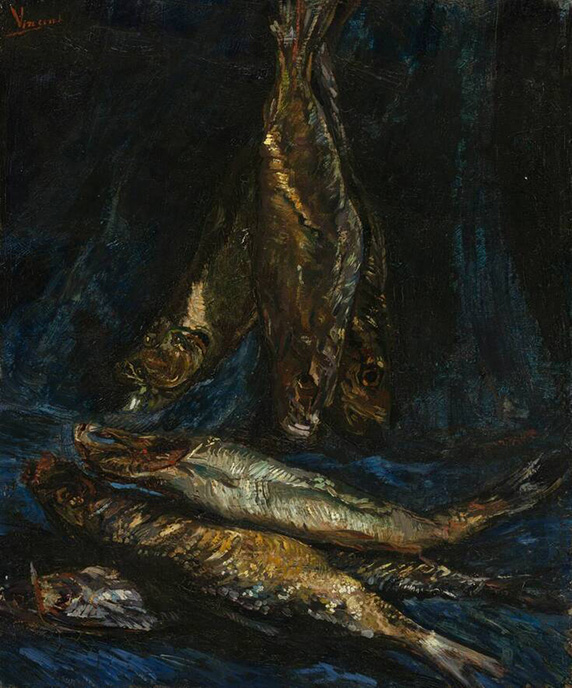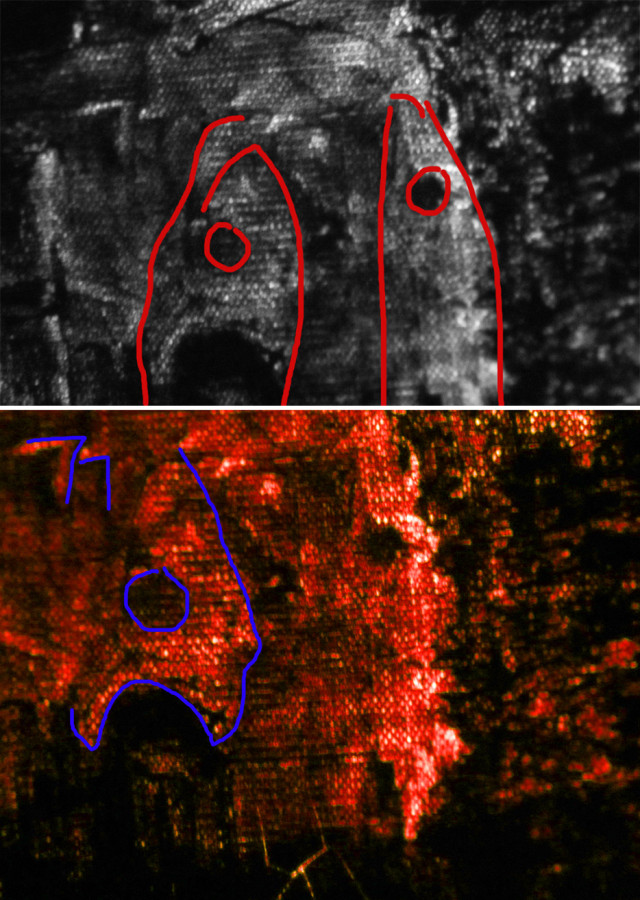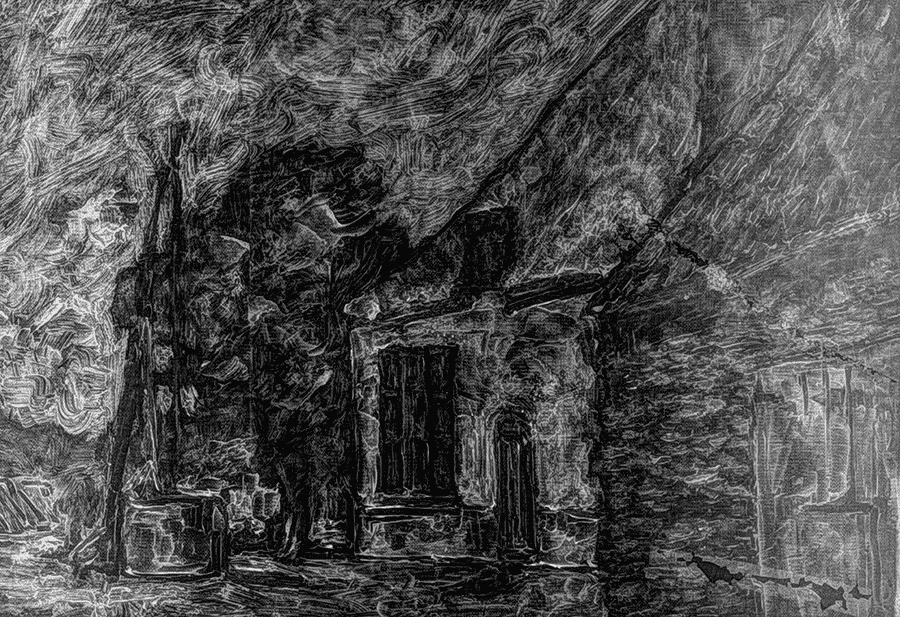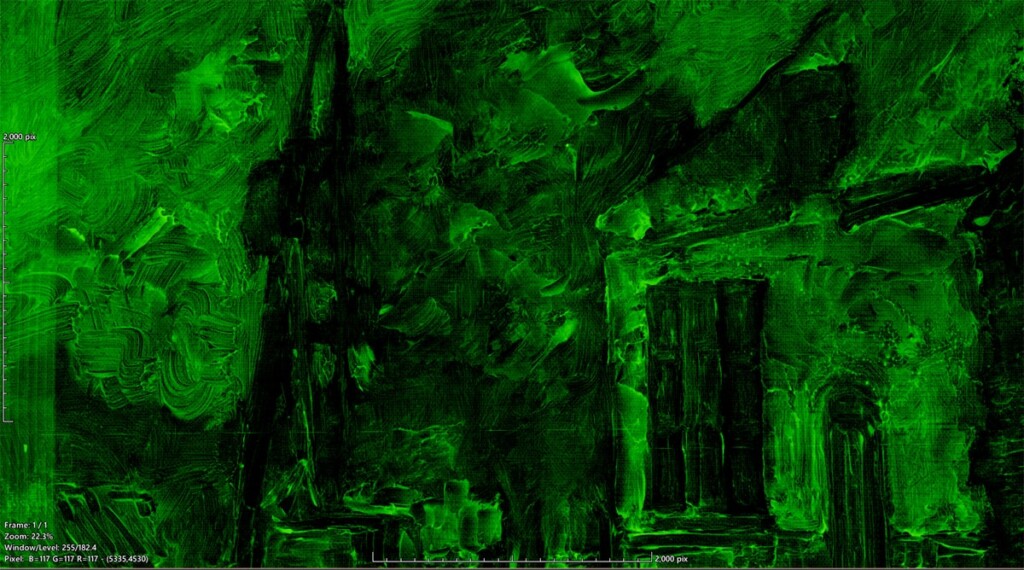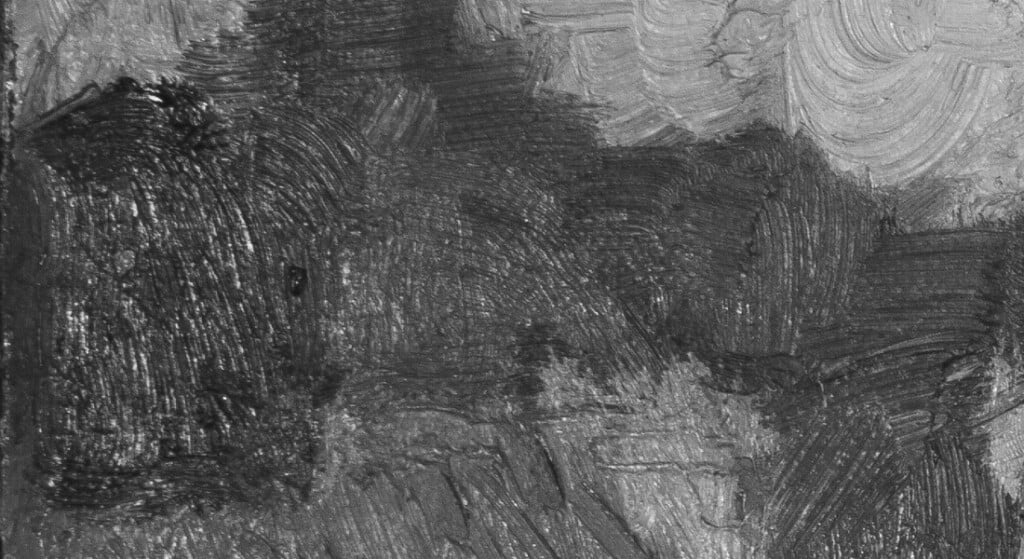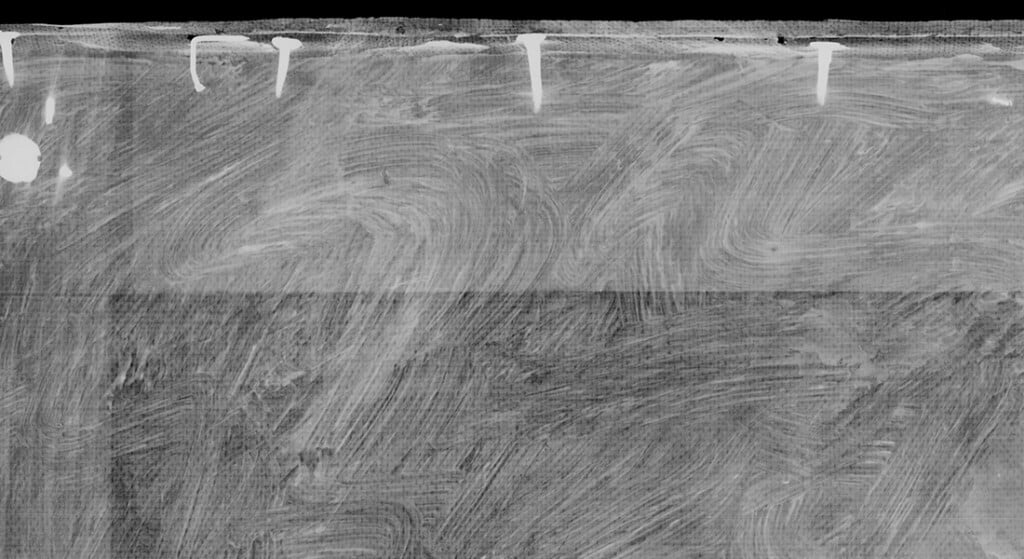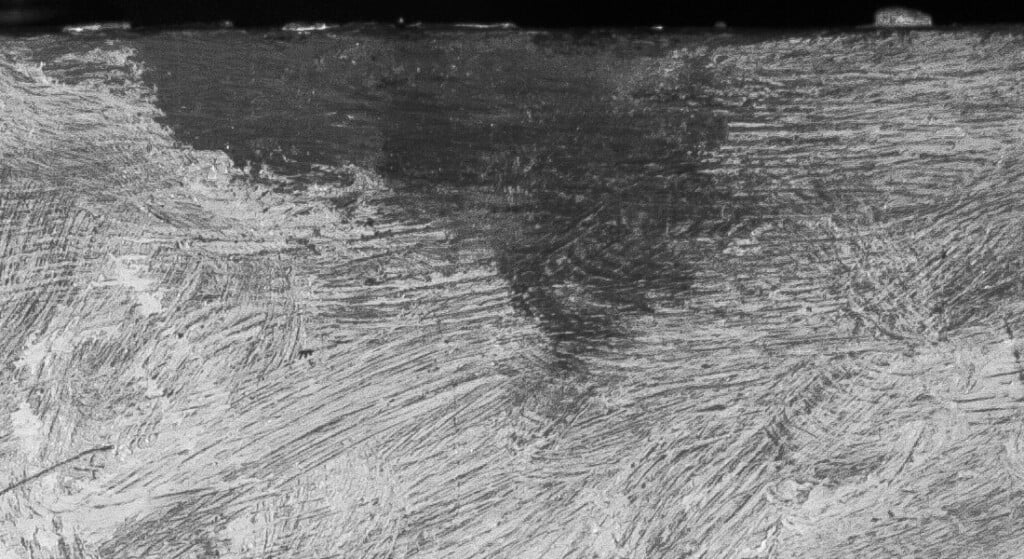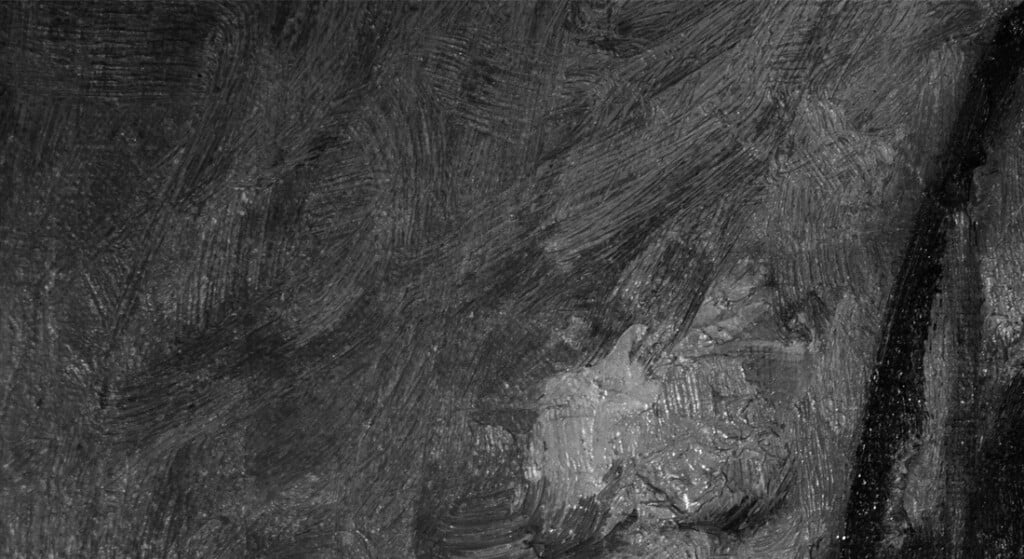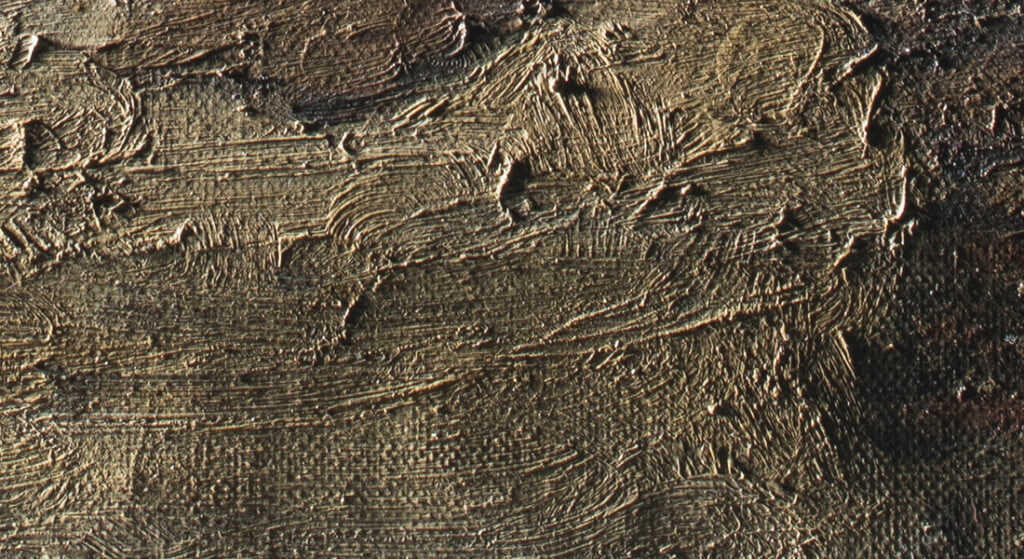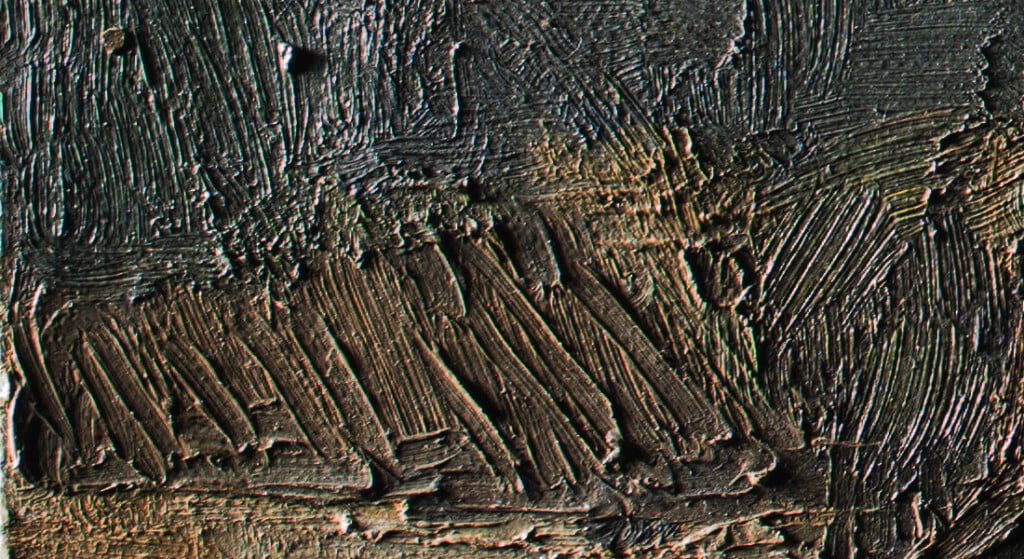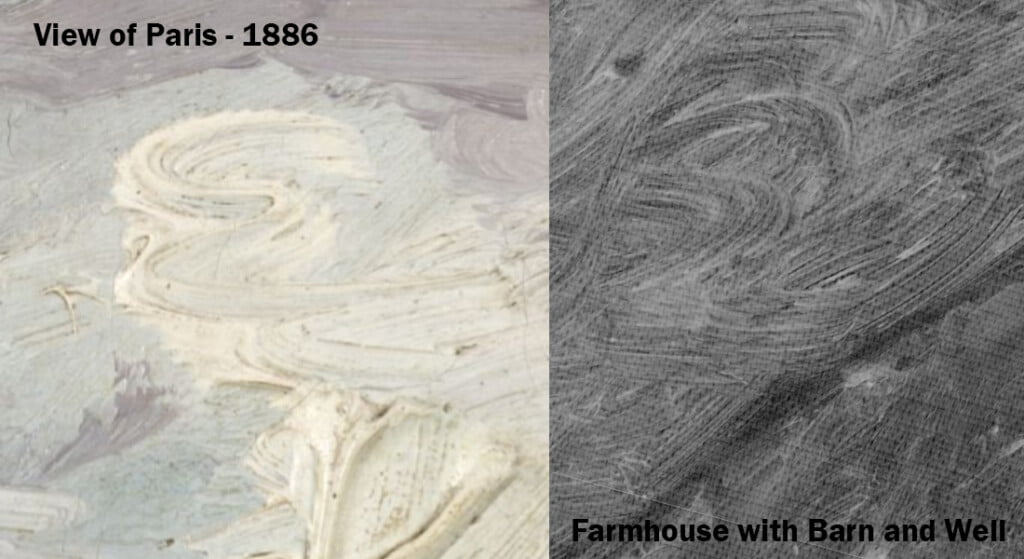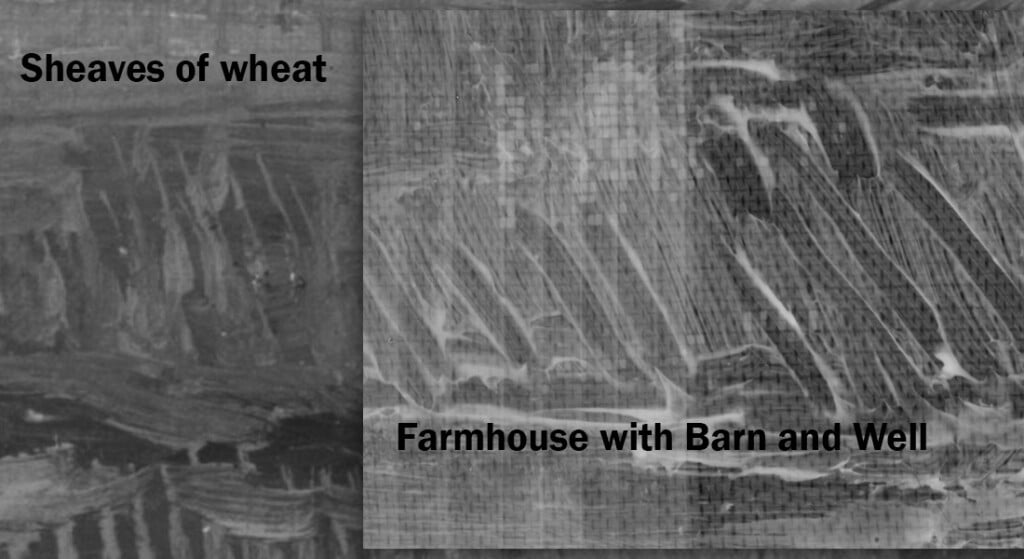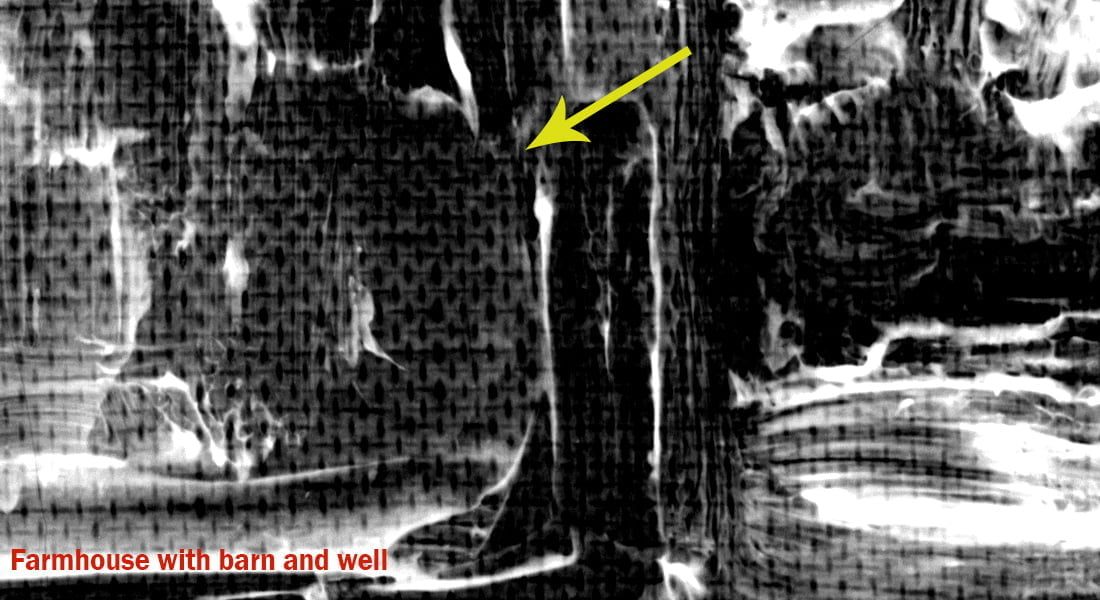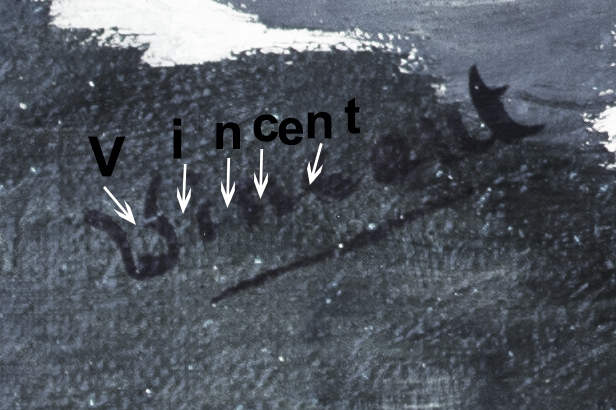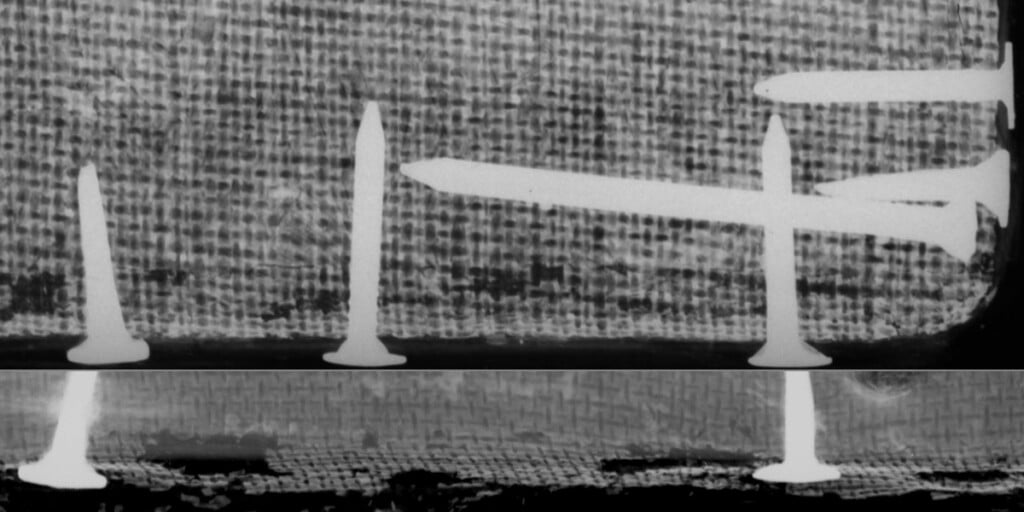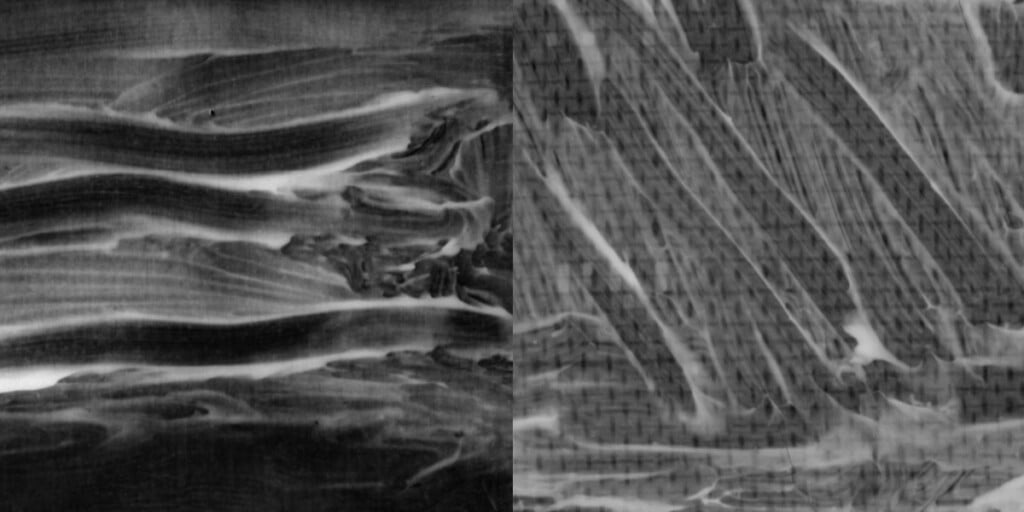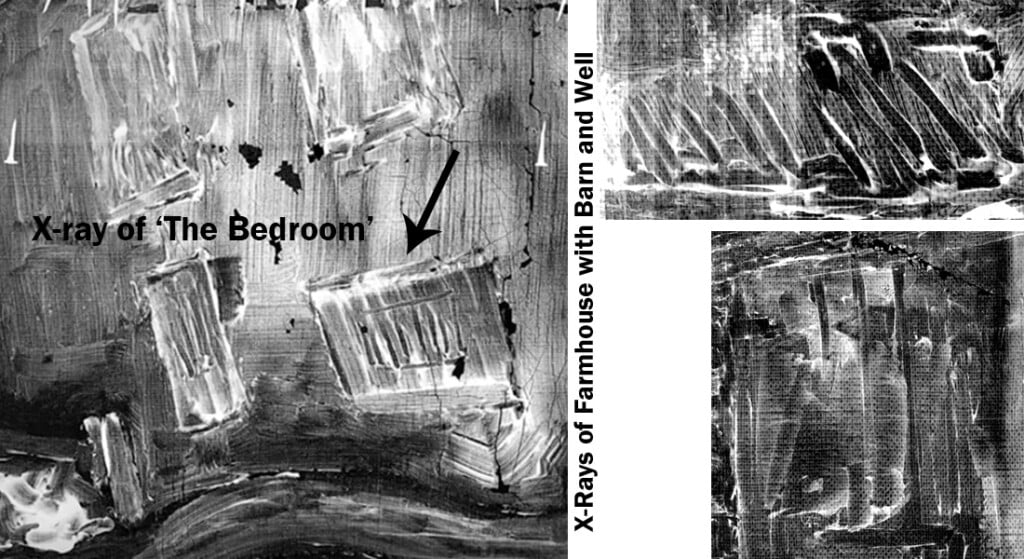Van Gogh Scientific Image Analysis
Raking Light, IR, UV and X-Rays of the painting reveal what's beneath the paint.
UV and IR details showing pentimenti (lines) beneath the paint
Upon analyzing The Hill of Montmartre with Stone Quarry (F229 JH1176), VGM experts noted that “there is quite a detailed underdrawing in a black material for the silhouettes of the structures on the hill, and it is suspected that other areas of the landscape were underdrawn as well.
Paint cross-sections show that in some places Van Gogh applied as many as four different paint layers on top of each other, including a white one to cover the first brown design. This suggests that he had difficulty in capturing the landscape at first go.
The scene was worked up wet-into-wet on the underpaint, probably in a single session.
Van Gogh first filled in the sky neatly up to the outlines of the buildings, then painted in the buildings and then the landscape, leaving reserves for the slightly larger elements. He finished off the scene by adding a few elements back in the studio, when the scene was already dry. The foreground was supplemented
with some green and transparent red strokes, and he added his signature on the far left with the same red paint. By way of an exception he used a good-quality red lake, cochineal on an aluminum calcium substrate, so those red accents have retained their color well. The painting now looks rather dark due to the severely yellowed varnish, whereas the palette is in fact quite light”
They could easily be talking about Farmhouse with Barn and Well! View of Paris (F261 JH1101) also has traces of a black pigment seen both on the painting and on the ground in paint cross-sections
The Raking Light Swirly Clouds below are almost identical to those of Sunset in Montmartre painted by Vincent in 1887.
Van Gogh Scientific Image Analysis. The image to the right bearing the signature is a UV partial laid on top of raking light. The violet area above the signature shows that this portion of the painting was retouched, which I had suspected. It covers another signature and black lines known as pentimenti.
One has to wonder what occurred here. Did Vincent change this section and then sign it? He would sometimes return to his works years later and alter them.
The entire painting appears to sport pentimenti beneath the paint. Black lines can indicate charcoal as an initial drawing of the work, but these are not consistent with the finished product, which in itself tells us that this painting is not a forgery of any nature.
X-radiography of many paintings by Van Gogh reveals images beneath the paint. The X-rays and IR of ‘Farmhouse with Barn and Well’ show a previous composition resembling Fruit, Birds’ Nests, or Fish and Fruit – I am presently conducting more analysis.
In September 1885 Vincent painted several Still Lifes – “What I have for you are some still lifes — of a basket of potatoes — fruit — a copper kettle &c.“. He goes on to say that he was painting a large still life but was not happy with it, so he “redid it”
VanGoghLetters notes that quote: “Of the known still lifes there are five that are clearly larger than most of the rest: F 59 / JH 921, F 51 / JH 925 [2527], F 107 / JH 933 [2531], F 106 / JH 936 and F 102 / JH 937. Assuming that Van Gogh is saying here that he painted one still life on top of another, the middle three no longer qualify because X-radiographs show that the compositions underneath are not still lifes. X-rays of the other two works are not available.
Van Tilborgh and Vellekoop (museum researchers) assume that these are not two works painted one on top of the other and that Van Gogh started on a new canvas” unquote.
Around this time, Vincent was also collecting and painting Birds’ Nests.
If you know Van Gogh, you KNOW Van Gogh.
Parts of the Raking Light from Farmhouse with Barn and Well is almost identical to that of Wheat stacks in Provence – 1888 and The Hill of Montmartre with Stone Quarry – 1886
The canvas Vincent used in 1885 and 1888 is identical to the canvas used for Farmhouse with Barn and Well
View original imaging files here:

